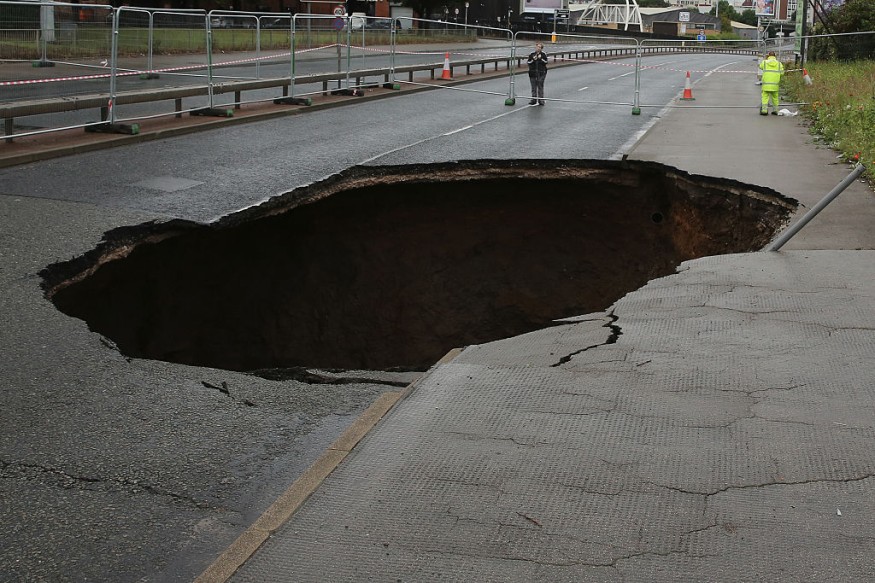
A couple of homeowners in Juan C. Bonilla, Mexico got quite the shock of their lives when a loud, cracking sound they heard did not turn out to be thunder. A massive sinkhole had appeared not too far from their own yard, prompting an evacuation and an immediate response from local authorities.
By the time the area was sealed off, the hole had grown about 200 feet in diameter and was measured to be at least 50 feet deep. A large, bubbling pool of muddy water can still be seen lying at its bottom.
Sinkhole's link to major Mexican geological fault investigated
When geologists arrived at the scene, the first major concern was the sinkhole's appearance in an area just right on the Alto Atoyac geological fault. It is not unusual for tectonic activity to initiate collapses and that sinkholes could be a sign of possible earthquakes. (In fact, some quakes in Croatia have actually caused a wide spate of sinkholes across the country.)
On the other hand, the hole appeared directly underneath a crop area, meaning it can be just as likely the agricultural activity could be another cause. In any case, researchers will need at least a month before the draw on anything conclusive
In the meantime, onlookers have been advised to keep a great distance as the hole grew very rapidly over a short period of time.
How are sinkholes formed?
Perhaps what makes a sinkhole notably terrifying is that there are a number of ways that they can be made. This leads to the popular fear that they can happen at any time, and in the most unexpected ways.
In Italy, for instance, sinkhole accidents have been observed in various parts of Rome. The cause was often found to be a form of deterioration from aging, urban infrastructure (such as underground tunnels, pipes and so forth).
On the other hand, rural sinkholes (like the one from Mexico) could also appear as the result of the sudden loss of groundwater. Whether by irrigation or underground activity, the absence of water most likely destabilizes the soil above it (and thereby causing a collapse).
Their appearances have been linked to just about everything, from unsustainable land development to even global warming.
Still, the finer points in each individual case should not be ignored. That is why geologists are always paying close attention to soil quality (which includes its ability to withstand pressure). While there are many ways to diminish this quality, using it as a starting point has allowed them to predict the likelihood of sinkholes everywhere.
That said, here are some things the average lay person should do if they ever encounter a forming sinkhole.
1. Move far away, fast.
Some sinkholes take hours to break down, but others can take mere minutes. Avoid taking chances and create a great deal of distance from a hole as fast as your feet can carry.
2. Call authorities immediately.
Sinkholes are a hazard to everyone in the area because of how they can easily swallow anybody who gets too close. Calling authorities means they can quickly come in and fence off the area.
3. Take note of potential property damage.
If a hole's growing perimeter is getting closer to some structures (like telephone poles or power lines) keep your distance from them as well. There is no telling how unstable the ground has become near those areas.
All in all, sometimes it is best to know how to respond rather than figure it out first.
© 2025 NatureWorldNews.com All rights reserved. Do not reproduce without permission.





